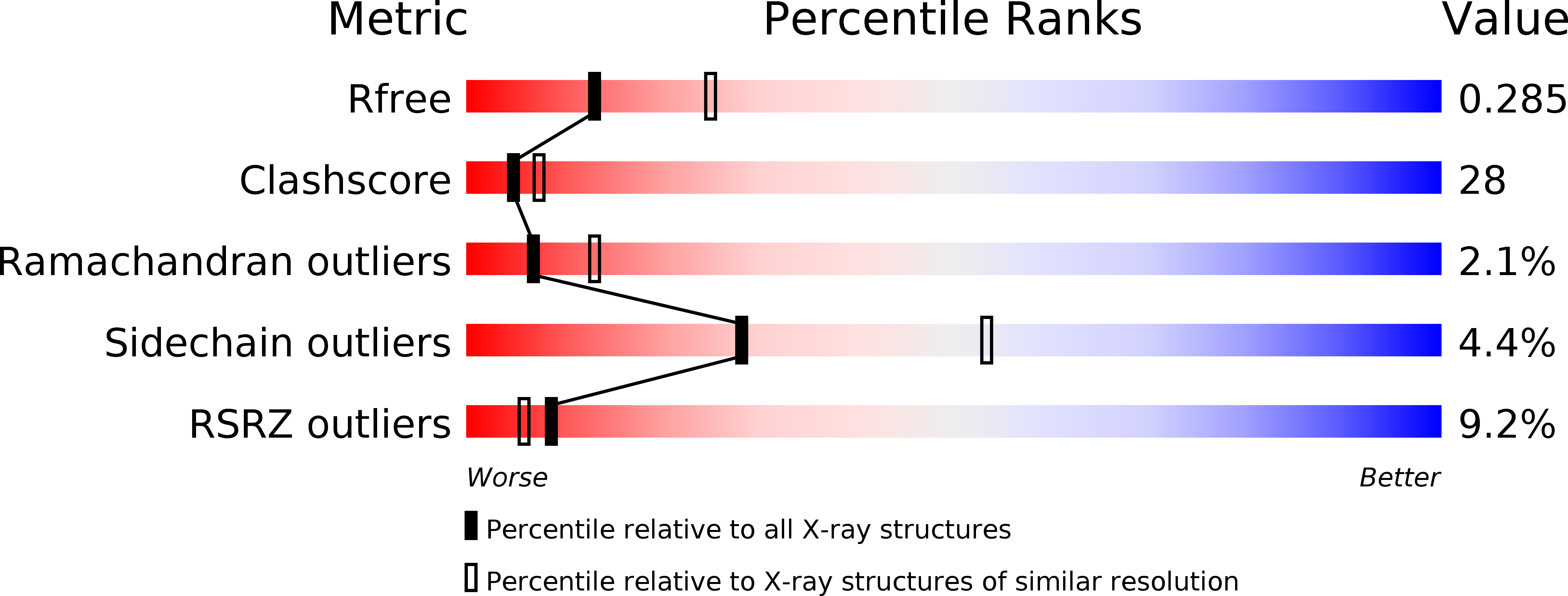
Deposition Date
2001-10-24
Release Date
2001-12-20
Last Version Date
2023-08-16
Entry Detail
PDB ID:
1K8G
Keywords:
Title:
Crystal Structure of the N-terminal domain of Oxytricha nova telomere end binding protein alpha subunit both uncomplexed and complexed with telomeric ssDNA
Biological Source:
Source Organism:
Sterkiella nova (Taxon ID: 200597)
Host Organism:
Method Details:
Experimental Method:
Resolution:
2.60 Å
R-Value Free:
0.28
R-Value Work:
0.24
R-Value Observed:
0.24
Space Group:
P 32 2 1


